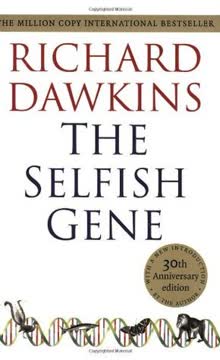重点摘要
1. 地理因素塑造了人类社会发展的不平等
“历史在不同民族中走上了不同的道路,这主要是由于环境的差异,而不是由于民族本身的生物差异。”
环境决定论。 书中认为,人类社会发展速度的巨大差异主要是由地理和环境因素决定的,而不是人口之间的内在差异。这些因素包括:
- 可驯化的植物和动物的可用性
- 大陆形状和方向(东西轴向 vs. 南北轴向)
- 思想和技术传播的障碍(沙漠、山脉、海洋)
- 适合农业和人口增长的气候和生态
这些地理优势或劣势使社会走上了不同的发展轨迹,导致了技术、政治组织和经济力量的差异,这些差异一直持续到今天。
2. 食物生产是复杂文明的催化剂
“食物生产的采用是一个自催化过程的典型例子——一旦开始,它会在正反馈循环中越来越快。”
农业革命。 从狩猎采集到通过农业和畜牧业进行食物生产的转变是人类历史上的关键转折点。这一转变允许了:
- 人口增长和密集化
- 劳动分工
- 技术和工艺的发展
- 社会等级和复杂政治结构的出现
食物生产创造了食物盈余,从而支持了更大的人口和非食物生产的专业人员,如工匠、士兵和统治者。这种正反馈循环加速了社会发展,导致了早期文明的兴起。
3. 植物和动物的驯化推动了社会进步
“所有作物都起源于野生植物物种。某些野生植物是如何变成作物的?”
人类与驯化物的共同进化。 驯化过程是一个长期的、通常是无意识的选择过程,选择对人类有利的野生物种。关键点包括:
-
驯化在世界多个地区独立发生
-
某些地区有更多适合驯化的野生物种
-
动物驯化提供了食物、劳动力、运输和肥料
-
植物驯化带来了可靠的食物来源和盈余
-
主要驯化物:
-
作物:小麦、水稻、玉米、土豆
-
动物:绵羊、山羊、牛、猪、马
欧亚大陆上可驯化物种的可用性使得那里的社会在发展复杂文明方面有了显著的领先优势。
4. 欧亚大陆的东西轴向促进了技术传播
“欧亚大陆的东西轴向使得许多中国的动物和作物在古代向西传播,而西亚的驯化物也向东传播到中国。”
大陆方向的重要性。 欧亚大陆主要的东西轴向使得作物、动物和技术在相似纬度和气候下更容易传播。这种传播至关重要,因为:
- 适应某一纬度的植物和动物通常可以在相似纬度下繁荣
- 面临相似挑战的社会之间技术和思想可以更容易地传播
- 连续的陆地促进了贸易和文化交流
相比之下,美洲和非洲的南北轴向创造了传播的障碍,因为作物和动物在传播过程中必须适应新的气候。这种大陆方向的差异导致了欧亚大陆更快的技术和社会发展。
5. 枪炮、病菌和钢铁赋予欧亚人征服优势
“不同民族之间的互动历史通过征服、流行病和种族灭绝塑造了现代世界。”
征服的直接原因。 欧亚大陆在食物生产和技术发展方面的领先地位在与其他社会的接触中带来了三大优势:
- 枪炮:先进的武器和军事技术
- 病菌:对摧毁其他人口的疾病的免疫力
- 钢铁:先进的冶金技术和工具
这些优势不是由于内在的优越性,而是由于更长的密集人口历史、动物驯化和技术交流的结果。这些因素的结合使得欧亚人能够通过征服和殖民统治世界的大部分地区。
6. 书写系统源于经济和政治需求
“书写与武器、微生物和集中的政治组织一起成为现代征服的工具。”
识字即权力。 书写系统的发展与复杂社会的需求密切相关:
- 贸易和税收的记录
- 法律和宗教文本的编纂
- 长距离的通信
书写系统通常从以下几种形式演变而来:
- 象形文字(表示物体)
- 词符(表示词或概念)
- 音节文字(表示音节)
- 字母(表示单个声音)
书写的传播,通常通过征服或贸易,进一步加速了知识和技术在社会之间的传播。
7. 社会复杂性通过竞争和创新增加
“所有这些波利尼西亚社会的差异在短短3200年内发展起来,是环境差异和创始效应对具有相同祖先文化的人口作用的结果。”
社会的分化进化。 随着人类人口的扩散和在不同环境中的定居,他们发展出了不同的社会结构和技术:
- 酋邦和国家从更简单的部落组织中出现
- 劳动分工导致了技术创新
- 社会之间的竞争推动了进一步的进步
这一过程并不均匀,如波利尼西亚社会从共同祖先文化中发展出的多样结果所示。环境限制、人口规模和孤立性都在决定一个社会能够达到的复杂程度方面起了作用。
8. 环境差异导致了不同的发展路径
“历史的广泛模式……是不同大陆人民长期历史的差异。”
生态决定论。 书中认为,环境因素在很大程度上决定了不同社会的发展轨迹:
- 肥沃的河谷支持早期农业(如美索不达米亚、尼罗河、印度河)
- 岛屿社会发展了海洋技术(如波利尼西亚)
- 严酷的环境限制了人口增长和技术发展(如澳大利亚)
这些环境差异导致了:
- 不同的人口增长率
- 不同程度的社会复杂性
- 不平等的技术发展
- 多样的文化习俗和信仰
环境与人类社会之间的相互作用创造了历史上观察到的多样文化和文明的丰富画卷。
9. 隔离和人口规模影响技术进步
“简而言之,中国的历史提供了理解整个东亚历史的关键。”
创新的因素。 书中指出了决定一个社会技术进步速度的两个关键因素:
- 人口规模:更大的人口产生更多潜在的发明者和创新
- 连接性:与外界有更多联系的社会可以借鉴和适应技术
中国的大人口和相对的连接性使其成为早期的创新中心。然而,其隔离时期导致了停滞。相比之下,像塔斯马尼亚这样的小型孤立社会随着时间的推移失去了技术。
- 促进创新的因素:
- 密集的人口
- 贸易网络
- 社会之间的竞争
- 对新思想的文化开放
这些因素的相互作用解释了为什么有些社会成为技术领导者,而其他社会则落后甚至倒退。
最后更新日期:
FAQ
What's Guns, Germs, and Steel about?
- Explaining disparities: The book explores why different human societies developed at different rates, focusing on environmental, geographic, and biological factors rather than racial differences.
- Yali's question: The narrative is driven by a question from a New Guinean politician, Yali, about why Europeans had more material wealth ("cargo") than New Guineans.
- Interdisciplinary approach: Jared Diamond integrates insights from anthropology, biology, and history to provide a comprehensive understanding of human societal development.
Why should I read Guns, Germs, and Steel?
- Groundbreaking perspective: The book offers a non-racist explanation for inequalities in human societies, challenging traditional narratives of inherent superiority.
- Engaging storytelling: Diamond presents complex ideas in an accessible manner, making it a compelling read for those interested in history, sociology, or human evolution.
- Relevance to modern issues: Understanding historical roots of societal disparities can provide insights into contemporary global inequalities and conflicts.
What are the key takeaways of Guns, Germs, and Steel?
- Geography shapes history: Geographic factors significantly influenced the development of agriculture, technology, and political organization across continents.
- Food production's impact: The transition from hunting-gathering to food production enabled societies to support larger populations and complex political structures.
- Role of germs and technology: Infectious diseases and technological advancements, particularly in weaponry, played pivotal roles in European conquests over other societies.
How does Jared Diamond address Yali's question in Guns, Germs, and Steel?
- Geographic advantages: Societies with favorable geographic conditions, like the Fertile Crescent, had access to more domesticable species, leading to earlier agricultural development.
- Cultural diffusion: The east-west axis of Eurasia allowed for rapid diffusion of technology and ideas, unlike the north-south axes of Africa and the Americas.
- Historical context: Diamond provides a framework to understand how geographic and environmental factors shaped the fates of different societies over time.
How does Guns, Germs, and Steel explain the rise of agriculture?
- Environmental factors: Certain regions, like the Fertile Crescent, had the right conditions for early agriculture, including suitable wild plants and animals for domestication.
- Food surplus and complexity: Agriculture led to food surpluses, allowing populations to grow and societies to become more complex with specialized roles and trade.
- Cultural evolution: The transition to agriculture was a gradual process influenced by resource availability and the need for stability.
What role do germs play in Guns, Germs, and Steel?
- Infectious diseases as weapons: Germs, particularly those from densely populated agricultural societies, decimated indigenous populations upon contact with Europeans.
- Immunity disparities: Societies with a long history of agriculture developed immunities to certain diseases, giving them an advantage over less exposed populations.
- Historical consequences: Diseases like smallpox significantly altered history, facilitating European conquests and colonization efforts.
How does Jared Diamond address the concept of race in Guns, Germs, and Steel?
- Rejecting biological determinism: Diamond argues against racial differences as explanations for societal success, emphasizing environmental and geographic factors instead.
- Cultural evolution over time: All humans share a common ancestry, and cultural practices, rather than inherent traits, shape societal outcomes.
- Focus on ultimate causes: Diamond encourages looking for deeper explanations for historical disparities, moving beyond superficial racial theories.
What is the significance of the title Guns, Germs, and Steel?
- Symbolizing power dynamics: The title reflects the three main factors contributing to the dominance of certain societies: military technology (guns), infectious diseases (germs), and industry/agriculture (steel).
- Interconnectedness of factors: Each element in the title is linked, illustrating how they collectively shaped human history.
- Framework for understanding history: The title serves as a lens to analyze historical events and societal developments, emphasizing environmental and technological influences.
How does Guns, Germs, and Steel explain the differences in societal development?
- Environmental factors matter: Geographic conditions, such as climate and resources, led to different development rates. Eurasia had more domesticable plants and animals, facilitating growth.
- Domestication and population growth: Societies that domesticated plants and animals could support larger populations, allowing for complex social structures and technological advancements.
- Germs and conquests: Diseases from domesticated animals decimated populations during conquests, giving immune societies a significant advantage.
What are the best quotes from Guns, Germs, and Steel and what do they mean?
- “History followed different courses...”: This quote encapsulates the book's thesis that environmental factors, not racial superiority, explain historical disparities.
- “The question, ‘Why did human societies...’”: Diamond critiques traditional explanations for societal differences, advocating for a scientific understanding of history.
- “Food production was indirectly a prerequisite...”: Highlights the interconnectedness of agriculture and technological advancement, suggesting farming societies were better positioned for future developments.
How does Guns, Germs, and Steel relate to modern global issues?
- Understanding inequality: Provides historical context for contemporary disparities in wealth and power, encouraging consideration of long-term effects of historical developments.
- Lessons for future interactions: Examining the past offers insights into fostering cooperation and understanding in a globalized world.
- Relevance to current conflicts: Themes of conquest, colonization, and cultural exchange resonate with ongoing global tensions and colonial legacies.
How does Guns, Germs, and Steel explain the spread of technology?
- Geographic diffusion: Technology spreads more easily along east-west axes, as seen in Eurasia, facilitated by similar climates and day lengths.
- Cultural exchange: Trade and conquest played roles in technology spread; interacting societies were more likely to adopt and adapt new technologies.
- Population density: Higher densities led to more innovation and advancement; larger populations had more inventors and competition, driving progress.
评论
《枪炮、病菌与钢铁》探讨了为何某些社会发展得比其他社会更快,将差异归因于地理和环境因素,而非种族优越性。戴蒙德认为,欧亚文明受益于有利的植物和动物驯化机会,从而导致技术进步。尽管该书因其发人深省的观点和广泛的研究受到赞誉,但一些评论者批评戴蒙德的决定论方法以及对文化因素的忽视。该书通俗易懂的写作风格和跨学科的方法使其对人类历史和发展的读者具有吸引力。



















